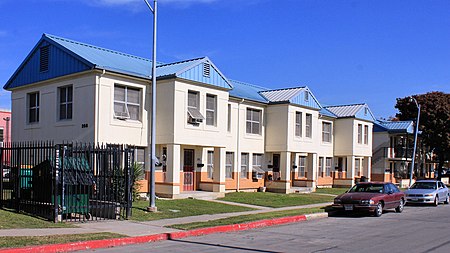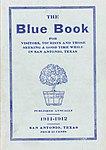Alazán-Apache Courts
Geography of San AntonioMexican-American culture in San AntonioNeighborhoods in San AntonioPublic housing in Texas

Alazán-Apache Courts is a public housing community in San Antonio. The neighborhood is located on the city's West Side, and was built in 1939. It was the first public housing built in the city and is currently made up of three different properties: Alazán, Apache and Guadalupe Homes. It is also one of the first public housing projects in the United States and originally served a predominantly Mexican-American neighborhood.
Excerpt from the Wikipedia article Alazán-Apache Courts (License: CC BY-SA 3.0, Authors, Images).Alazán-Apache Courts
South Brazos Street, San Antonio
Geographical coordinates (GPS) Address Nearby Places Show on map
Geographical coordinates (GPS)
| Latitude | Longitude |
|---|---|
| N 29.416865 ° | E -98.514893 ° |
Address
South Brazos Street 1049
78207 San Antonio
Texas, United States
Open on Google Maps







